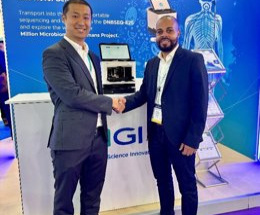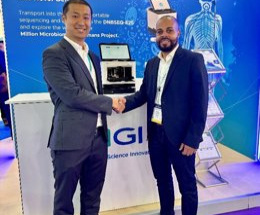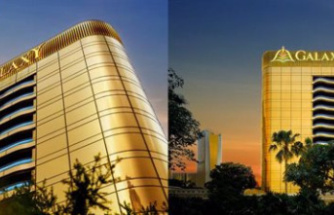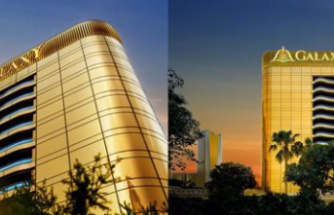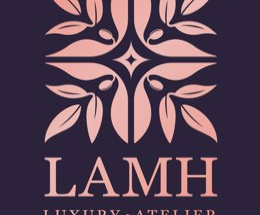Happiness has always been an obsession for Tony Hsieh, the 43-year-old CEO of online shoe and clothing retailer Zappos. An enthusiastic attendee of raves in college, Hsieh was influenced by the culture’s focus on PLUR: Peace, Love, Unity, and Respect. As an adult, he was a regular at the Burning Man festival in Black Rock City, Nevada, the yearly rave and futuristic arts festival attended by Mark Zuckerberg, Jeff Bezos and other Silicon Valley CEOs.
Hsieh has been known to conduct company interviews on party buses and in bars, a firm believer of hiring people he’d like to get a drink with. (When he wrote a book in 2010, it was called “Delivering Happiness.”)
So it’s not surprising that in 2012, when Hsieh embarked upon a $350 million urban renewal project in an otherwise commercially deserted stretch of downtown Las Vegas, it wasn’t just about real estate, or the fact that Zappos had bought the old Las Vegas City Hall for its new headquarters.
The Downtown Project, as he called it, would be a Utopia in the desert, a sort of Disney World for adult entrepreneurs, small business owners and Zappos employees. It would be founded on the “3 C” approach he uses at Zappos — connectedness, co-learning and “collisions” — i.e., the serendipitous encounters one might have on, say, a walk to the coffee shop or the grocery store — that Hsieh believes would lead to greater innovation and better business all around.
Bring these elements together, and then — as Hsieh told Fortune magazine — “the magic will happen on its own” — i.e., the dynamic creativity of the community project would impact innovation at Zappos.
But when where you worked became intertwined with where you lived, even how you lived, it could become something else: A cult.
A new book called “The Kingdom of Happiness: Inside Tony Hsieh’s Zapponian Utopia” by Aimee Groth, who lived in the Downtown Project while she was doing research for the book, sheds light on the project, which just hit its five-year mark in January.
With the tagline of “City as a Start-Up,” Hsieh aimed to do in five years what would normally take 15 to 20 years, a quest he’d refer to as “the four-minute mile of city building.”
He invested his own money, banking on the hope that he could make Las Vegas the “co-learning and co-working capital of the world.” Small business owners would get loans to start the kinds of restaurants, coffee shops and stores that make a neighborhood appealing. In order to recruit talented people to live in Las Vegas, “crash pad” apartments were available for people to stay in, free of charge.
It would be like Burning Man all year round, Hsieh hoped.
And it would be filled with llamas.
Llamas are something of a spirit animal for Hsieh and an unofficial mascot for Zappos; they show up periodically at the headquarters and headline Zappos parades. For Hsieh’s 40th birthday party in 2013, several friends got llama tattoos, and one of them brought a llama to the party. The 60 blocks that make up the Downtown Project even resemble the humped animal when viewed from above, and are referred to affectionately as “the llama.”
(When it came time for Hsieh to get a pet, though, he opted for an alpaca named Marley. “I would highly recommend [living with an alpaca] if you have the space,” he told Modern Farmer in 2015. “They are curious and always fun to interact with.”)
The $350 million was largely spent on real estate, cheap and available in Las Vegas since the 2008 recession. Fifty million was allotted for small business and technology investments, with another $50 million set aside for education, arts and culture within the area and beyond (to this end, a cultural attache from Burning Man was hired to consult on art projects. This included the acquisition from Burning Man of a 55-foot tall praying mantis sculpture that shoots fire out of its antennae at night.)
Several million went toward a private school that would raise children as mini-entrepreneurs, and into one of the neighborhood’s crown jewels, the annual Life is Beautiful music, food and art festival. There was the Container Park, a shopping mall made entirely of shipping containers, and the Airstream Park — referred to as “Llamapolis” — a residential RV and tiny house park inspired by Burning Man. The park would become Hsieh’s full-time residence, a place where people would gather around to cook, listen to music, and hang out.
Many loved the new community and enthusiastically drank the Kool-Aid (although here, the hipster favorite Fernet is referred to as “Kool-Aid,” with many parties culminating in group shots of the Italian bitter.)
But the focus on happiness all the time put unnatural strain on some members of the community. Perhaps the nonstop partying was to blame. “Partying hard was the norm when people entered Tony’s world …” writes Groth. “Zappos is different from most companies in that employees are rewarded for partying with their CEO. I never heard of anyone in his sphere suffering repercussions from doing something outrageous or unsavory. Those sorts of events only seem to bond the tribe.”
The Project clashed with Las Vegas locals, many of whom were less than thrilled by the insularity of the community. “You often hear Zappos and the Downtown Project — and Vegas tech at large — compared to a cult,” wrote Las Vegas resident Joshua Ellis in a blog post entitled “Vegas Tech, We Need to Talk.”
“When I began to venture downtown every week to go to the new Tech Jelly meetups … there was very much the same feeling that Tom Wolfe described about Ken Kesey’s Merry Pranksters in the Electric Kool-Aid Acid Test: you were either On the bus, or Off the Bus.”
The constant socializing and emphasis on community was stressful to social introverts, and the emphasis on “collisions” — and the measuring thereof — turned a simple walk to a store into a potential stress point. After-hours socializing, no matter how casual, was a constant: You’d work your 8 hours (or more), then go home and see your coworkers at an impromptu cookout or bar-hopping session. There was no Off button. Home was work, and work was home. You were free to opt out of all the socializing, but that might leave others wondering how committed you were to your work.
Over the span of little more than a year, three of the entrepreneurs most publicly involved with the Project committed suicide: Jody Sherman, founder of Ecomom, in January 2013; 24-year-old Venture for America member Ovik Banerjee, in January 2014; and Matt Berman, founder of the flagship store in the Container Park, in May 2014.
Home was work, and work was home. You were free to opt out of all the socializing, but that might leave others wondering how committed you were to your work.
The deaths sent shock waves through the small community of about 300 entrepreneurs, many of whom were unhappy with the way Hsieh seemed committed to keeping each suicide hush-hush. While the community grieved, Hsieh removed himself, staying behind the scenes. A grief counselor was brought in, but Hsieh never publicly addressed it.
Home was work, and work was home. You were free to opt out of all the socializing, but that might leave others wondering how committed you were to your work.
After Banerjee’s death, the word “community” was removed from the project’s mission statement. Hsieh explained the omission by saying that “community” implied a responsibility that his for-profit endeavor was not meant to handle.
In September 2014, 30 members of the Downtown Project were laid off, and Hsieh stepped down from his role as leader of the Project, though still remaining involved as an adviser.
“ ‘Business is business’ will be the defense from those you have charged with delivering the sad news,” wrote Project member David Gould in an open letter to Hsieh in Las Vegas Weekly at the time. “But we have not experienced a string of tough breaks or bad luck. Rather, this is a collage of decadence, greed and missing leadership.”
The project isn’t over, though, and while critics pointed to the layoffs and slow business growth as a sign that Hsieh’s plan could never come to fruition, others insist that progress has been made, and more progress takes time.
“No doubt Tony’s lifestyle is intoxicating for those who partake,” writes Groth in her book. “But it’s hard to know if, without all the perks, his deputies would truly rally around a community development project or evangelize delivering happiness to the world . . . When the party is over, who is really going to stay until the end? Will Tony even stay? I finally understood why he chose five years as the completion date for Downtown Project. Most people don’t have the wherewithal to continue dreaming that hard for that long. Changing the world, it turns out, is a lot of work.”
Our editors found this article on this site using Google and regenerated it for our readers.


